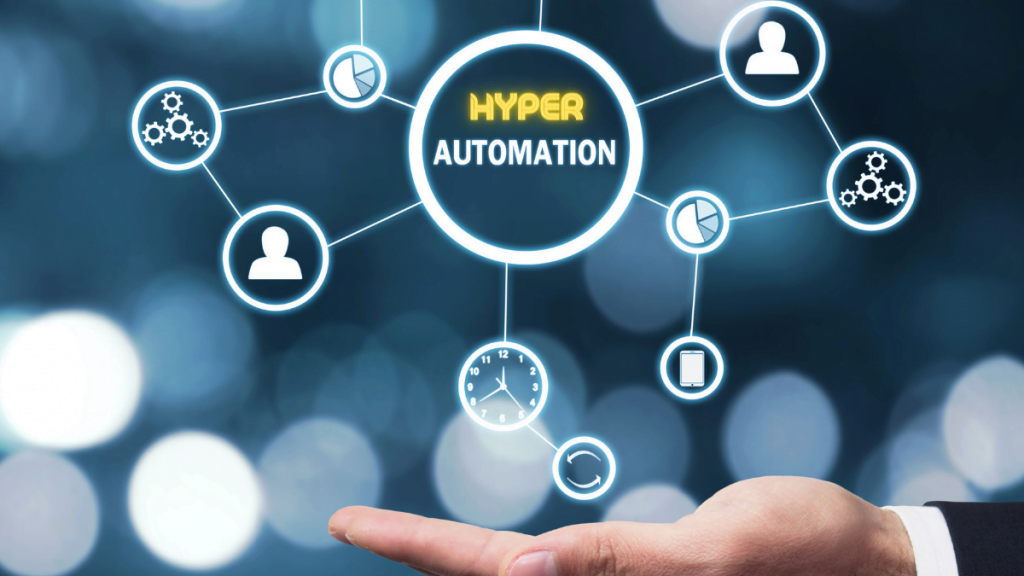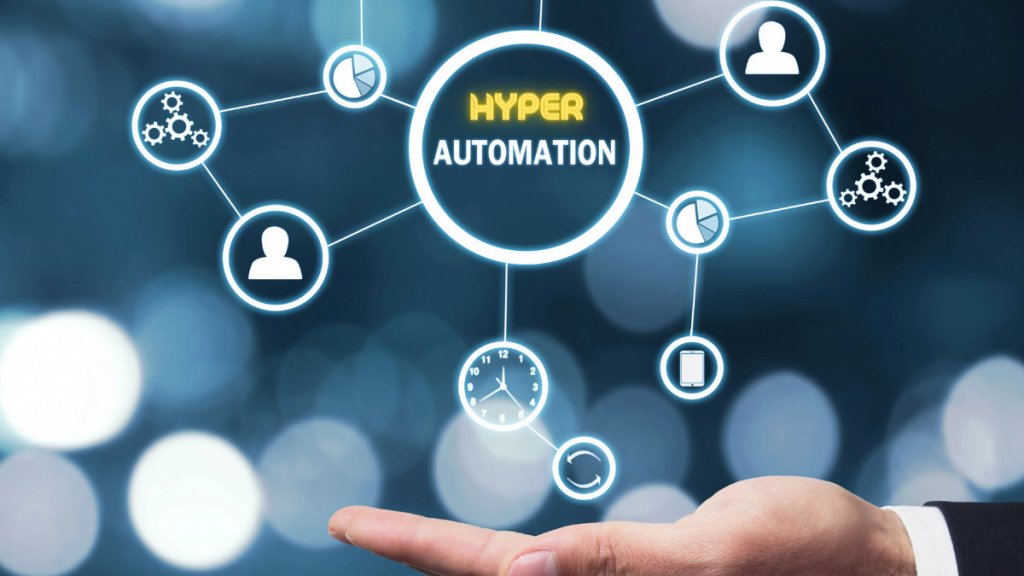The rise of technologies like Artificial Intelligence or Robotic Process Automation has caused a major shift in industry processes. Moreover, the year 2020 has marked as the beginning of the fourth industrial revolution in which automation will be moved to another level, where automation will acquire more intelligence than ever before – that’s popularly known as Hyper automation.

Automation V/S Hyper automation
We will first discuss automation, and then its impact on hyperautomation. Automated technology is the process of automating a task, procedure or other activity with minimal human involvement. It’s done to increase reliability, efficiency, and speed of previous tasks performed by people. In the past, we had to physically visit a branch to print our passbooks. An employee there would manually enter all of the transactions into your passbook. They used to have bankers print out passbooks, but with the introduction of self-service printers we no longer need to visit the branch. We can now simply put our passbook in and the Self Service Passbook Printing machines will print it for us. Automation is the key.
Hyperautomation, on the other hand is a blend of technologies which will bring end-to-end automation of a company’s processes under unified and intelligent system.
It will be an application which will orchestrate and streamline as many tasks and activities as possible. Automation technologies are being used in synergy, rather than just using one.
Big data also helps automate several decision-making aspects within the organization. Hyperautomation enables a modern workforce to leverage AI for end-to-end automated, provide crucial insights on Return On Investment from automation and transform the business and IT alignment. In the future, Hyperautomation can replace human workers, and offer better promotion and opportunities to humans.
Hyperautomation reduces operational costs as well as errors. Machine learning helps enterprises learn from their past mistakes, improve production and performance. This goes beyond RPA, which merely propagates the human task. This technology is designed to close the gaps left by RPA, allowing organizations to automate complicated processes that previously required human interaction. Hyperautomation is a new way to automate tasks. It has evolved from simple automation to intelligent work that can produce stunning results for business.
Hyperautomation – What does it include?
Like I said earlier on the blog, Hyperautomation is not possible with one tool. Instead it requires several automated tools working together in order to function without assistance from human beings. Let’s see how many tools it uses and the benefits they can bring to an organization.
- Robotic Process Automation
RPA allows an organization or individual configure software to emulate and combine actions performed by humans within a digital system or device to complete the process. RPA makes it easier for humans to manipulate applications and capture data. The system can communicate with other systems, interpret, and trigger responses to complete a variety of repetitive tasks. In the future, when combined with hyperautomation technologies, we can expect to see intelligent devices and robots.
- Intelligent Business Process Management Suites
iBPMS combines BPM (Business Process Management) with AI technologies to help businesses automate end-to-end business processes. The following steps will be automatically triggered if the requirement is to collect, store or share data. The entire workflow can be automated rather than being focused on just one single task.
- AI/Machine Learning
Artificial Intelligence (AI) is the ability of machines to independently think and take their own decisions without interference by humans. AI’s main purpose is to create software and bots with the ability to think like humans. ML, or Machine Learning, is a subset within AI. It uses learning algorithms to enable them to improve and learn from past experiences. This does not just mean that a car can be programmed to obey traffic signals, but also allows cars to exhibit and learn from the experiences of other cars as well as their own driving experience to reduce the number of road accidents. As a component of hyperautomation it is one of the key technologies needed to make devices think and learn before they perform according to workflow.
- Natural Language Processing (NLP).
NPL, a component of artificial intelligence, allows computers to interpret and manipulate human natural language. The technology helps improve communication between humans and machines. One of the most known examples of NLP and AI is nonetheless – Alexa from Amazon that hears your command convert it into machine language and provide you with the desired outcome. NPL can make a significant difference to the intelligence of hyperautomation.
- Recognition by optical character
OCR refers to the conversion of handwritten, typed or printed text images into machine-readable characters. You can achieve this by scanning the documents, taking photos of them and more. CamScanner is an example of a program that lets you scan documents using your phone’s camera. Then, the software converts them to text that can then be modified according to the user.
In hyperautomation, OCR can help advanced machines or robots to automate the process of capturing data from documents and analyzing it to take the required actions while handling the task.
- Advanced Analytics
Understanding and analyzing data are two different things. It’s only when data can be visualised that you have mastery. Visualizing data helps unlock invaluable insights that can give the company a competitive edge.
It is the autonomous or semiautomatic examination of data or content using advanced tools to generate insights, make recommendations and predict. This gives companies the ability to do advanced calculations like “what ifs”.
Data Studio is one of Google’s most popular advanced analytic tools. Although it can be difficult to learn, the effort you put in is worth it. Data Studio allows you to create stunning and informative visualizations for your workers, clients and leadership.
A company can also decide, using advanced analytics, which operations are best for the future. The blend of advanced analysis with hyper automation is indeed valuable.
Hyperautomation: How does it work?
Three major components of hyperautomation are – Automation, Orchestration (It is the automated management, configuration, and coordination of computer systems, services, or applications), and most importantly Optimization. It is essential for any organization to build a solid automation foundation if they want to see their hyperautomation strategies take off. This can include RPA to automate basic tasks, solutions for different teams or departments, and data warehouses.
The automation tools are always on top of the orchestration tools. Later, AI and ML were introduced to help an organization automate and:
- Implementing Changes To Prevent Failures
- Missed opportunities in automation
- Rapidly optimising processes
- Innovative new methods
- Automation of manual processes
The advantages of hyper automation
As well as making work simpler, hyperautomation can bring unexpected benefits to your business. It can provide the following benefits:
- Automated Process
Hyperautomation is a process that automates both repetitive work and the knowledge-based tasks to increase efficiency and reduce errors.
- Improved team collaboration
Hyperautomation has led to a greater level of collaboration between team members. Everyone in the company is involved in the transformation, which benefits customer experience and satisfaction.
- More Productivity
With hyperautomation, the productivity in a company will be faster than before as robots assist human workers to perform various tasks easily.
- Instant Insights
Hyperautomation is a powerful tool for optimizing performance and reducing risks.
You can also read our conclusion.
Overall, it can be said that Hyper automation exists only for one reason – to make our tasks easier and efficient. The bots created by hyper automation are designed to increase productivity and accuracy, thus improving the business process. The rise of hyper-automation will free knowledgeable employees from monotony, and they will also feel more appreciated. They will also be doing more important work. Be prepared to open up more possibilities for automation with hyperautomation. Robots do not exist to replace our work, but to promote us.
